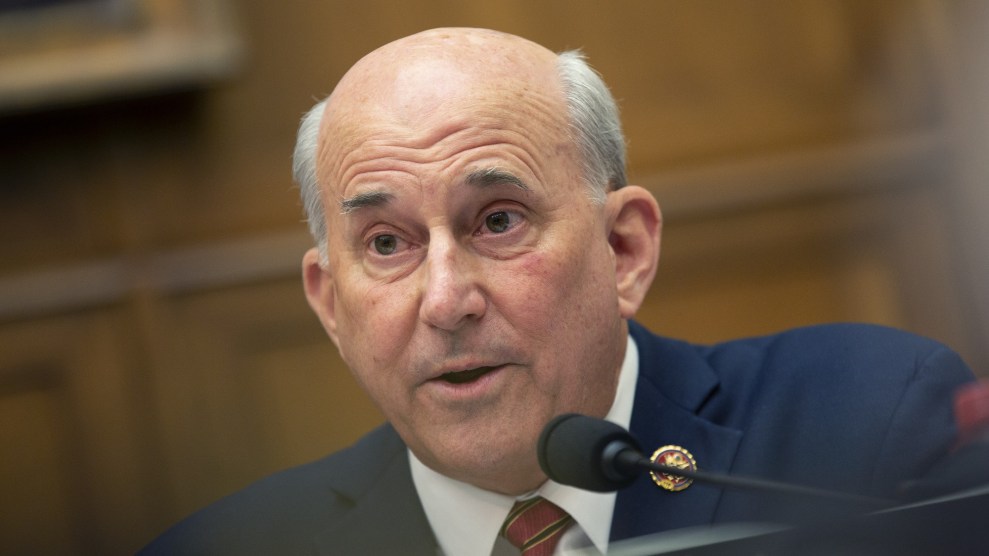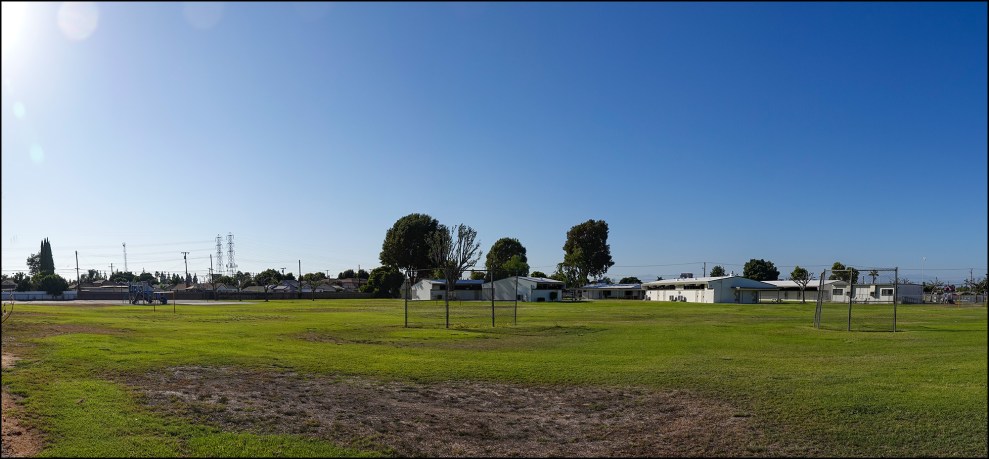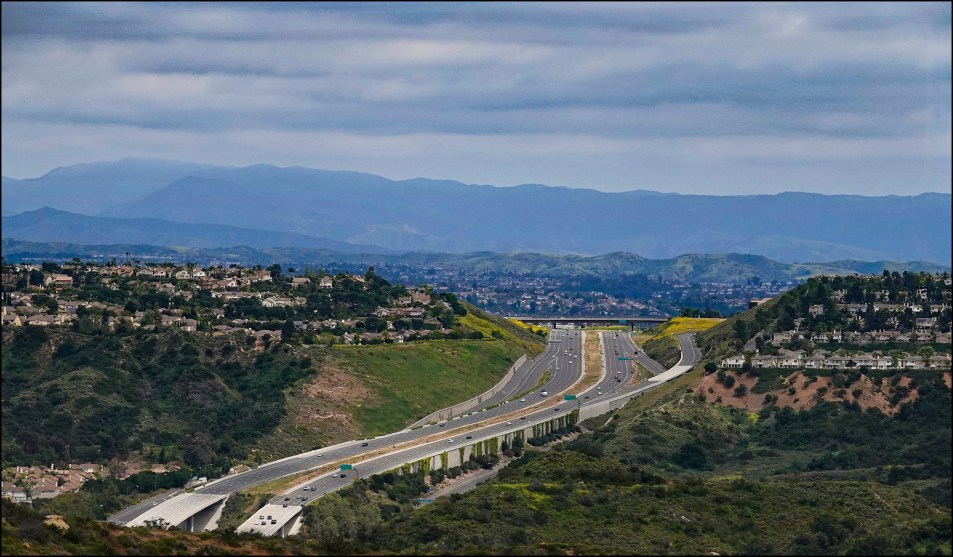
SDI Productions/Getty
As students in some states are starting to trickle back into schools, those very institutes of learning have become the latest battleground for the Great Mask Debate. (I use the term “debate” loosely, and sarcastically.) On Thursday, the debate hit the pages of the New York Times, by way of a high school in the Atlanta suburbs. The Times recirculated several viral photos of mostly white teenagers crammed into the hallways of North Paulding High School, creating a modern Where’s Waldo, but for face coverings.
The school district’s superintendent told the Times that they encouraged students and staff to wear masks, but they wouldn’t require them.
“Wearing a mask is a personal choice, and there is no practical way to enforce a mandate to wear them,” the superintendent wrote to the Times.
Unfortunately for Paulding County School District students, there are a number of other clothing items that can be mandated.
According to the district’s publicly available student handbook, skirts must be no more than “3 [inches] from the top of the kneecap as measured by a ruler or the length of a 3 x 5 index card” and shorts must be “5 [inches] from the top of kneecap as measured by a ruler or the width of a 3 x 5 index card.” Shirts must be free of “writing, pictures, or graphics that unreasonably attract the attention of other students or cause disruption.” And that’s just a sample of what is allowed; the list of prohibitions is even longer:
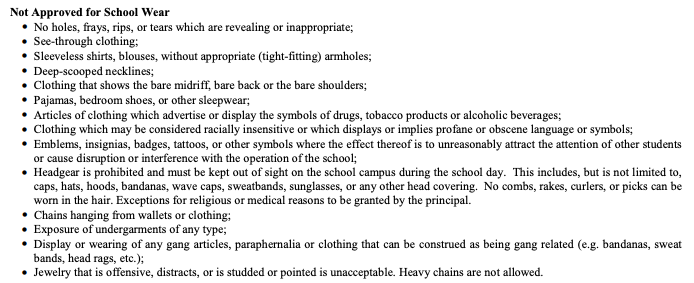
So the schools in Paulding County, Georgia, can ban hats, but not mandate masks. Iiiiiinteresting.
Some of the lower schools in the district have their own, even stricter dress codes. One of the middle schools in the district has a 28-slide powerpoint presentation about the dress code, with three full slides dedicated just to leggings.
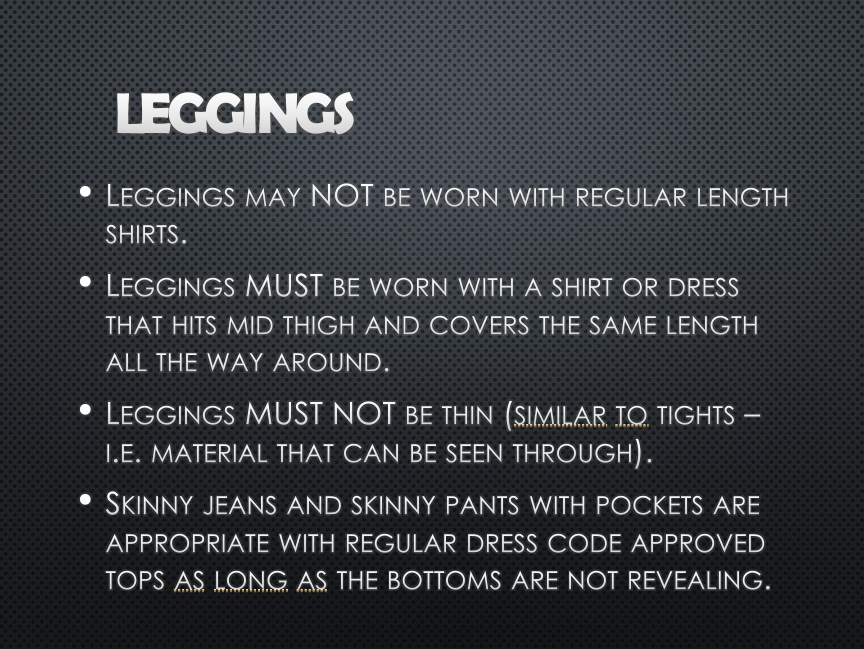
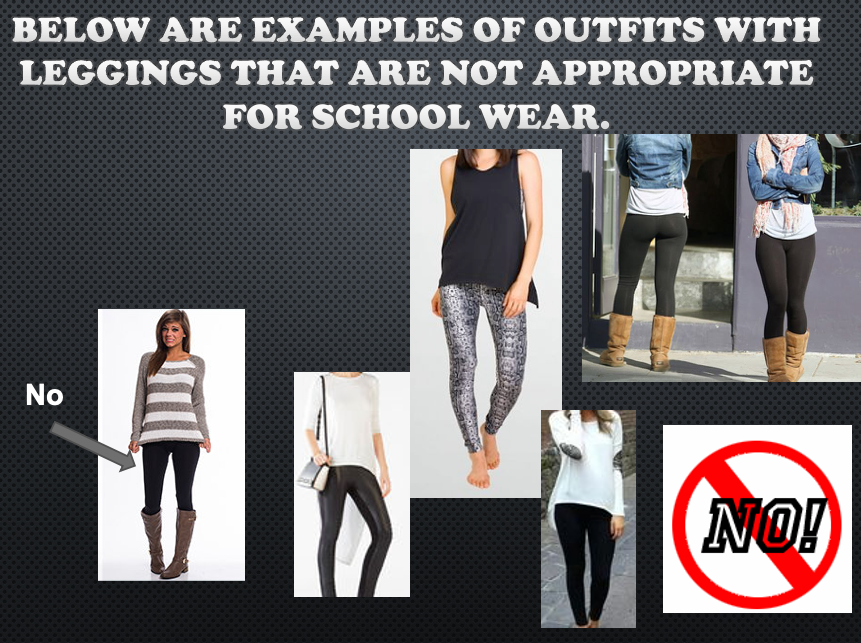
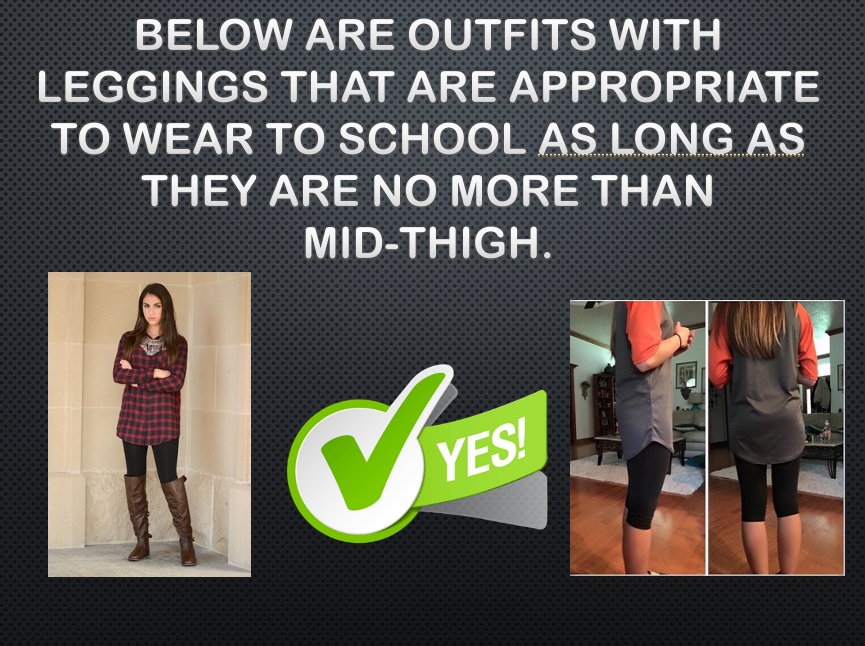
Another middle school in the district prohibits “pants that touch the ground… wide legged pants, skin-tight pants [and] form-fitting clothing,” as well as jewelry that is studded or pointy.
But a mask requirement is just impractical.


